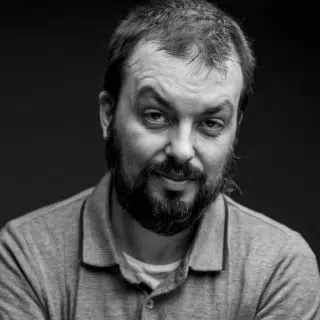- Home
- EN
- Our impact
- ProspeKtive
- Between digital and vegetal, the convergence to change the urban model

Between digital and vegetal, the convergence to change the urban model
December 2022
Expert
Arnaud Pagès is a journalist. He is interested in environmental issues in the broadest sense, with a focus on the urban dimension. He presents here his new book Villes de demain, Michel Lafon, 2022.
In this recently published book, journalist and writer Arnaud Pagès provides a synthesis of the ubiquitous subject of tomorrow's cities based on a wide range of trends and weak signals that he has gleaned. For all that, the prospective reflection is enriched by a historical perspective, a long time that allows to indicate both the evolutions that have produced today's cities while understanding the weaknesses of our models.
The major challenge for the cities of tomorrow, both smart and sustainable, lies precisely in the ability to bring about a dual model in which digital and plant-based technologies converge. First, digital technology, particularly in its ability to rationalize energy consumption, is becoming essential in the sense that it improves urban production and management, despite the environmental impact it also has. Moreover, we can legitimately question this race to a certain form of digital extravagance embodied, for example, by the infinite cloud, the metaverse and coherence with growing demands for sobriety. Then there is the green transformation, with the greening of buildings, the promotion of parks and gardens and even urban agriculture. Digital and vegetal technologies come together and must therefore be considered as pillars for the emergence of a model that limits the effects of climate change, which is already underway anyway, while allowing for adaptation. This is an almost Darwinian dimension, since our species, dominant but threatened by itself, must find solutions for adaptation. Let us never forget that cities are the most polluting objects that Man has implemented and that the increasingly strong constraint obliges us to find new balances, at the risk of seeing our species put its future at risk. Constraint often accelerates change in pain, but it is also a path to resilience.
Although digital and green levers can be considered powerful, they are still only tools that must be manipulated by the many actors of urban production. And it must be admitted that citizen participation is a trend that has been affirmed over the last few decades, and that puts the people concerned at the heart of the system. This participatory democracy is now well integrated among decision-makers, who know that changes in urban production and management are taking place at the level of both planning and behaviour. And all the players in the city are now fully aware of the environmental issues at stake, to the extent that the boards of directors of the major urban production companies and elected representatives are driving real change. The hunt for greenwashing is also helping to limit the less serious initiatives, but overall, decision-makers, whoever they may be, are well aware that tools are available to limit the city's impact on the environment. But only a global approach can lay the foundations for a new model, which is characterized by the fact that the smart city is also a green city largely produced by dialogue between all the players. Convergence exists and it is pointless to oppose technology, nature and humans, as the interdependence is so strong.
Tomorrow's cities must therefore be able to adapt to climate change by reducing its impact, using technological tools if necessary, but also by giving an important part to the living, which has long been marginalized in urban production. Faced with our current model, which consumes a large proportion of resources, the cities of tomorrow will be able to limit their environmental impact while integrating the living in a city-nature dimension.
The proposed work highlights the problems we are all facing, but is optimistic because of already existing trends that redefine urban production, as well as the number of initiatives that prove it. Both the underlying trends and the weak signals indicate an increasingly widespread desire to live the urban differently, based on a responsible city that is capable of being something other than a great consumer of resources. In order to do this and to limit the environmental changes that are inexorably underway, the city will have to be innovative by turning to both technology and nature, by looking at where we are going but also where we have come from.
Interview with the author by Nicolas Cochard, Kardham R&D Manager
Release date: December 2022



